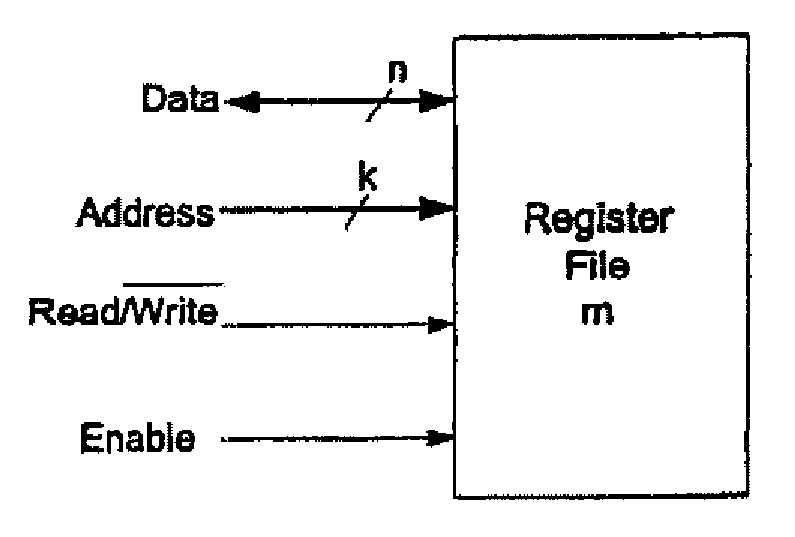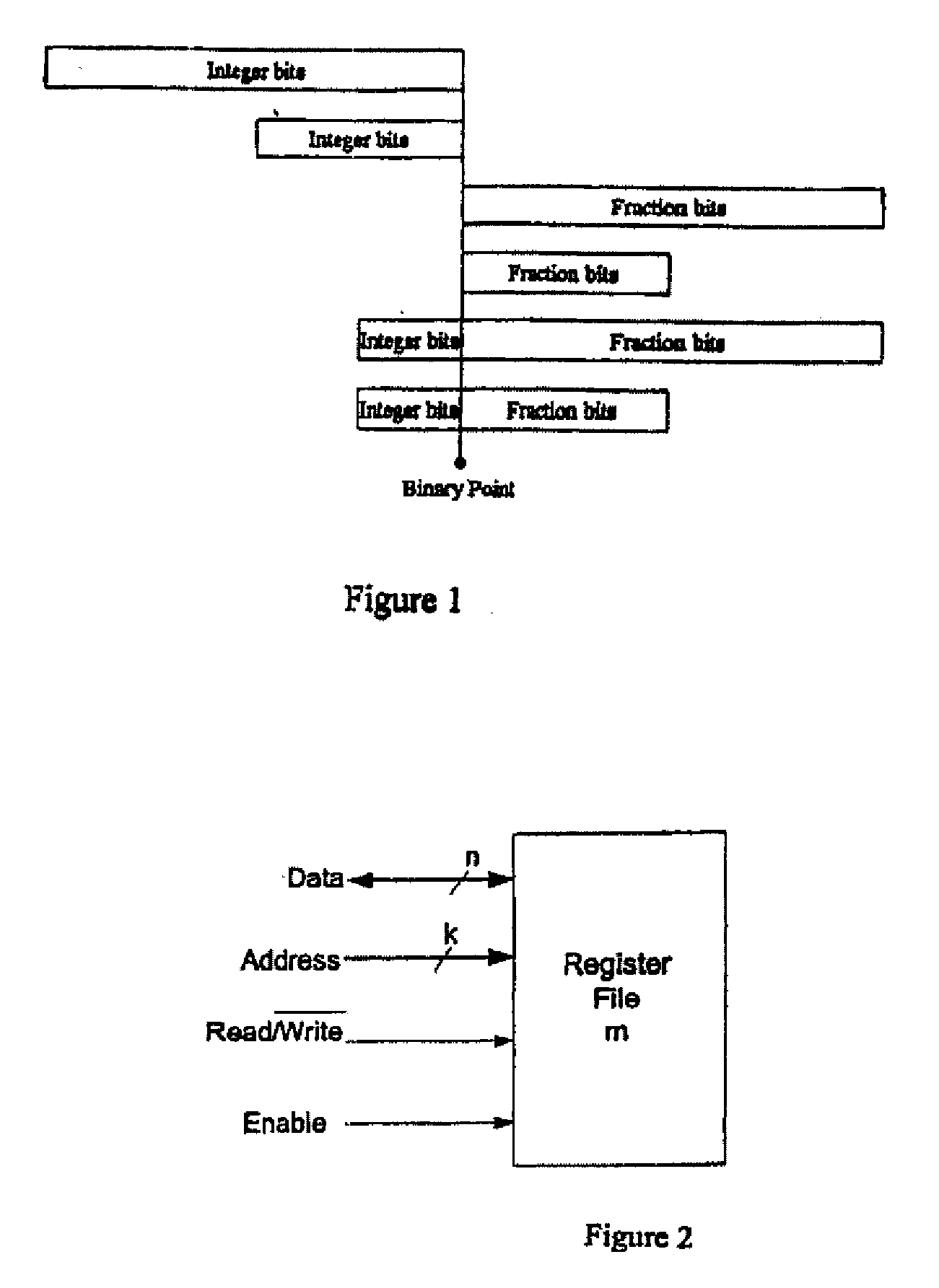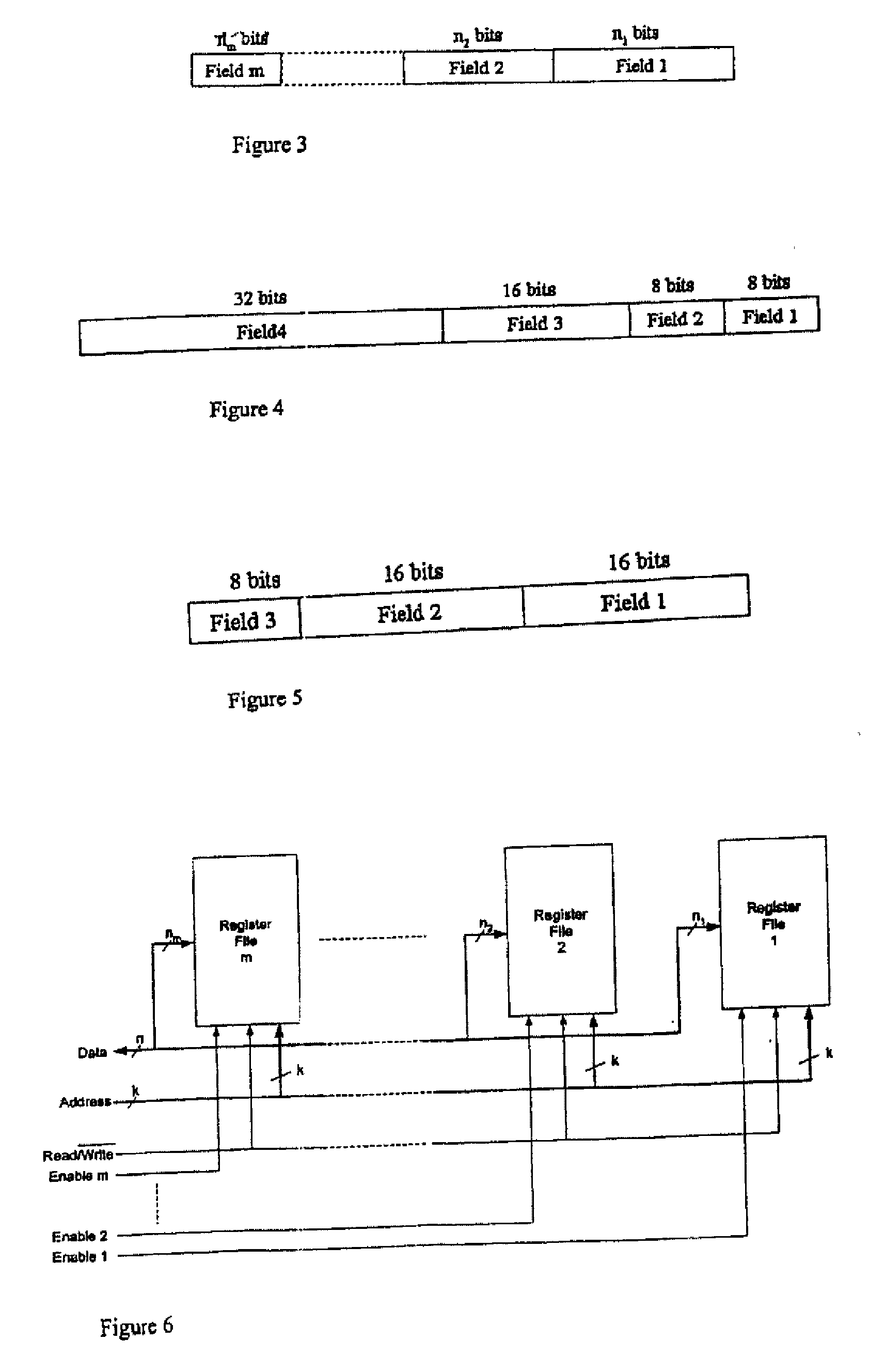Data file storing multiple data types with controlled data access
a data file and data access technology, applied in the field of digital processors, can solve the problems reducing power dissipation, and reducing power dissipation, so as to reduce area and power dissipation, the effect of reducing power dissipation
- Summary
- Abstract
- Description
- Claims
- Application Information
AI Technical Summary
Benefits of technology
Problems solved by technology
Method used
Image
Examples
Embodiment Construction
[0018]The invention is a method and apparatus for efficiently storing multiple data types in a computer's register or data file. Compared to previous techniques, a single register or data file is used to store multiple data types and only the necessary portions of the register file are read or written. One method for accomplishing this is illustrated in FIG. 3, which shows a single register within the register file that has been partitioned into multiple fields, where m denotes the total number of fields. Each of the fields can vary in size and there can be an arbitrary number of fields. The number of bits in Field j as denoted in nj. The sum of the lengths of the fields (n1+n2+. . . n) should be as large as the largest data type to be stored in the register file. Furthermore, the registers should be partitioned such that each data type can be accessed (read or written) by accessing one or more fields.
[0019]As an example of the invention, consider a processor that supports 8-bit, 16...
PUM
 Login to View More
Login to View More Abstract
Description
Claims
Application Information
 Login to View More
Login to View More - R&D
- Intellectual Property
- Life Sciences
- Materials
- Tech Scout
- Unparalleled Data Quality
- Higher Quality Content
- 60% Fewer Hallucinations
Browse by: Latest US Patents, China's latest patents, Technical Efficacy Thesaurus, Application Domain, Technology Topic, Popular Technical Reports.
© 2025 PatSnap. All rights reserved.Legal|Privacy policy|Modern Slavery Act Transparency Statement|Sitemap|About US| Contact US: help@patsnap.com



